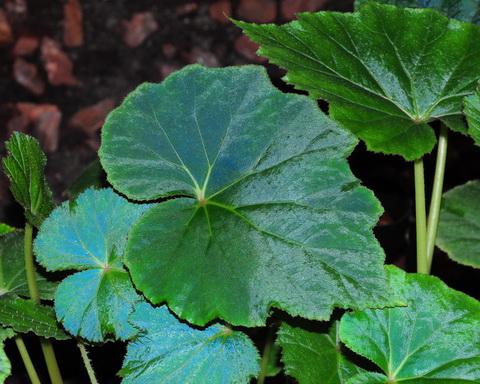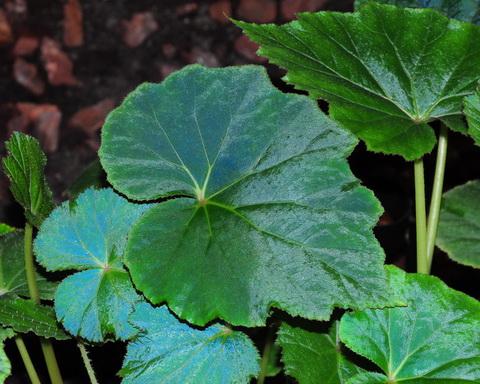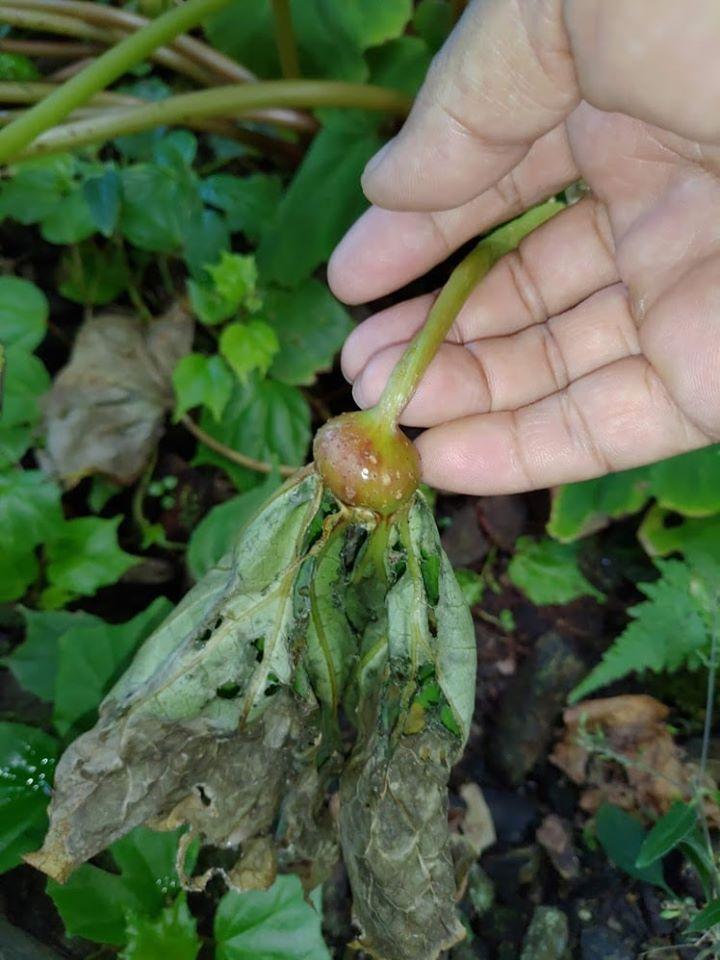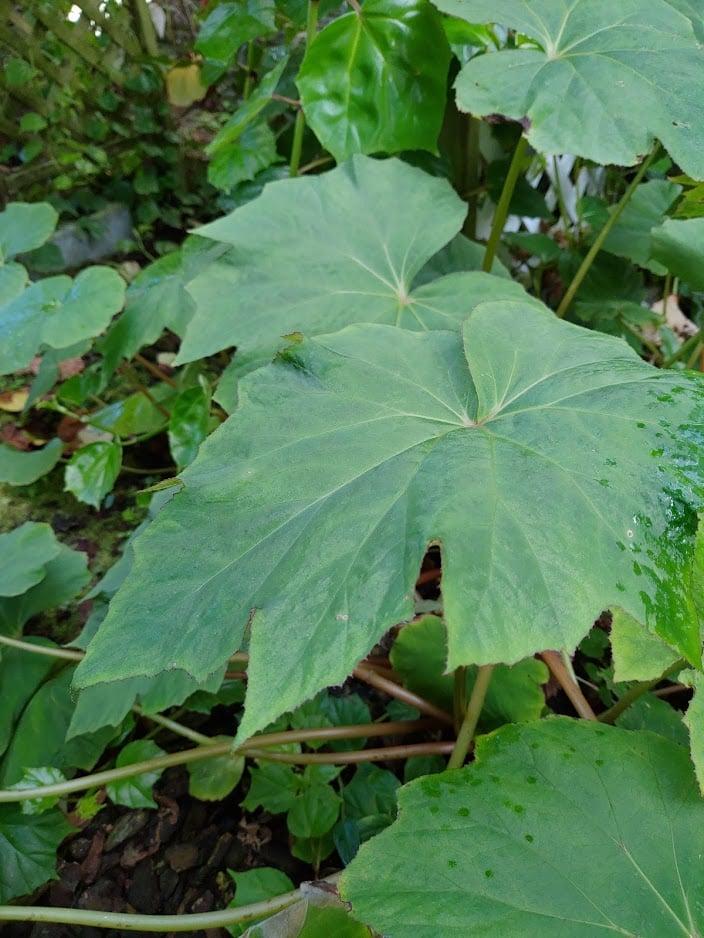秋海棠科
學名:Begonia emeiensis C.M.Hu
英名:Mt. Emei Begonia
原產中國四川峨嵋山區。有橫生的粗壯根莖,大型的深綠色葉片。葉片經過閃光燈或特定角度的光線照射,會反映出藍色色調,稱為結構色,是葉片表面組織反射光線而成。更奇特的是葉片與葉柄銜接處,會膨大成球狀,因為球體重量使得葉片接觸地面,以後會生根發芽藉此繁殖。開花期夏季,粉紅色的花朵聚集成團,像繡球花的模樣也很可愛。
Mt. Emei Begonia is native to the Emei Mountain Area in Sichuan, China, with horizontal thick rhizomes and large dark green leaves. When the blade is illuminated by flash or light from a specific angle, the blade will reflect a blue hue, called structural color, which is formed by the reflection of light on the tissues of the leaf surface. What is even more peculiar is that the joint between leaves and petiole will swell into a ball and press down the leaf to contact the ground to take root and then sprout to reproduce. During the flowering period in summer, clusters of pink flowers look like hydrangea, very lovely.
秋海棠屬多年生草本,原產中國四川省峨嵋山。有橫生的粗壯根莖,直立莖短縮;卵狀長圓形葉片有淺裂,葉長12~14cm,寬11~13cm;葉色深綠,光線照射會反映藍色。葉片與葉柄銜接處或膨大為球莖狀的珠芽,接觸地面後會生根發芽藉以繁殖。聚繖花序,花粉紅色,開花期夏季。
A perennial herb in the genus Begonia, native to Emei Mountain, Sichuan Province, China. Rhizomes stout and stems upright; leaves ovate oblong and lobed, 12-14cm long and 11-13cm wide; dark green, leaves reflect blue with sunlight. It propagates best by the swollen bulb-type bulbils borne at the junction of the petiole and leaf blade, and roots sprout from the bulbil after contacting soils. Cymes, flowers pink, flowering in summer.
半日照溫暖環境,高濕度可以促進生長。夏天需遮陰不可曝曬。栽培介質需排水良好、富含有機質。每季施用一次長效性肥料。以扦插法或葉基處的珠芽繁殖。
The plant normally grows in warm environments with partial sunlight and thrives in highly humid conditions. It needs shaded from direct sun in summer and prefers well-drained soils rich in organic matter. Apply long-active fertilizer once a season. Propagated by cuttings.
綠色葉片在拍照時受到閃光燈或其他強光照射時會反射藍色。這是因為葉片表面的細胞結構反射光線所造成的現象,稱為結構或物理色,與一些虹彩光澤的甲蟲或孔雀羽毛的絢麗色彩道理相同,是自然觀察的好材料。
The green leaves reflect blue by a flash light or other strong light, which is known as structural or physical coloration when the visible light is reflected by the cell structure on the leaf surface, same as the brilliant coloration of some iridescent beetles or peacock feathers, which is an excellent example for natural observation.




